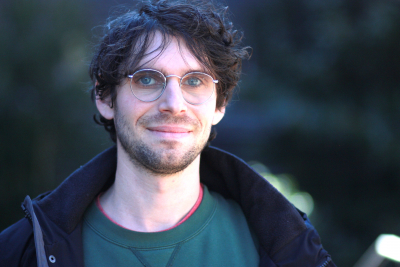Rafael Lazega, 2023-24 HOPE Center Visiting Scholar

In the early 1930s, a bright undergraduate student at the London School of Economics named Ronald Coase used fellowship money to travel to the United States and tour some of the biggest companies in the country, including Ford and General Motors. He was out to understand just why firms exist.
A few years later, he published one of the most famous articles in the history of economics, “The Nature of the Firm.”
Basically, Coase argued in his article, firms exist because organizing the production of goods and services within can be cheaper and easier than to purchase those goods and services on the open market.
“That Coase made the effort to see how firms operate firsthand reveals a lot about what was important to him as an economist,” says Rafael Lazega, a 2023–24 HOPE Center Visiting Scholar. “And it prefigures a lot of what was important to him throughout his career.”
As Rafael explains, Coase was bothered by what he saw as excessive theorizing in economics, or, more precisely, theoretical work that made no attempt to connect with how things actually worked in the real world—such as how a Ford Motor Company really went about making decisions and doing business.
“This was especially troublesome to Coase once economists became more and more involved in policymaking, which they did after World War II,” Rafael, a PhD student at Lausanne, says. “Coase urged his fellow economists to study actual firms, actual consumers, actual governments to see how the economy really operated.”
In a word, Coase wanted economic theory to be more realistic. But as Rafael is quick to point out, what counted as realistic for Coase can be hard to pin down.
“We do know that transactions costs were important to Coase”—essentially, those are nonmonetary “costs” of doing business, such as tracking down information, locating trustworthy vendors, and filling out complicated forms. “Coase felt strongly that economists needed to take them into account.”
Transaction costs could not only slow down the economy; as Coase pointed out, they could also tempt society to look to other ways of getting things done, including, if things went really awry, dictatorships.
Coase spent a good part of his long career (he died at age 102, in 2013) at the University of Chicago, yet as Rafael explains, he was determined to challenge some of the main currents of the Chicago school of economics, especially their willingness to admit excessively unrealistic theoretical assumptions, like that of perfect rationality.
Coase found in Frank Knight another Chicago economist who was concerned about the relation between theory and reality. Knight insisted that theory and reality had to be distinct, but that decisions should not be made only on the ground of economic theory. Rather, decisions should take into account the broader reality, which includes morals and aesthetics.
Coase agreed with this, says Rafael, whose PhD advisers have close connections with the Center: Harro Maas is a former HOPE Center Visiting Scholar and frequent contributor to the journal HOPE, while Steve Medema is the associate director of the Center and on HOPE’s editorial board.
“Knight had a specific way of sorting out the relationship between theory and reality, and I’m trying to sort out myself just what that way was.”
This is Rafael’s second visit to the United States. In 2022, he participated in the HOPE Center’s Summer Institute, attended the History of Economics Society conference in Minneapolis, and visited the archives at the University of Chicago.
Rafael will return to Switzerland in June.